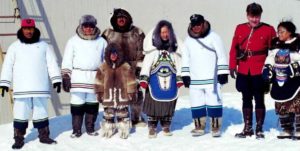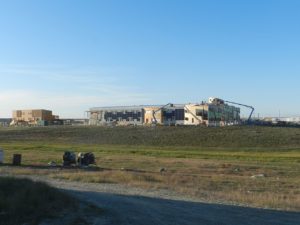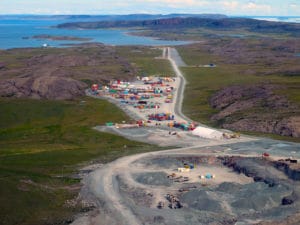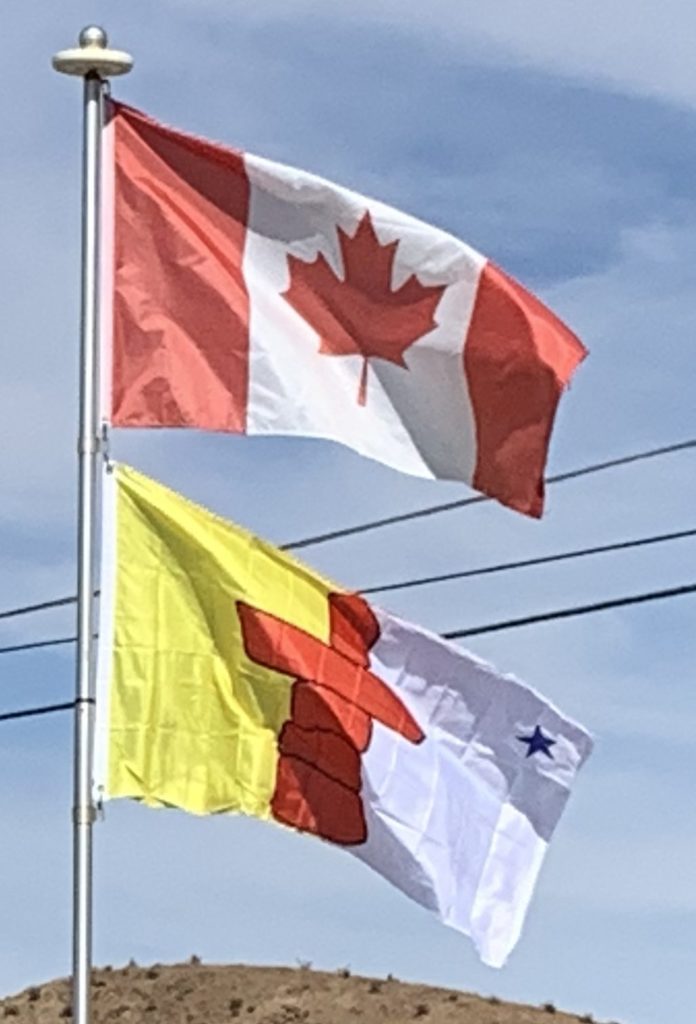
The land claims agreement was completed in September 1992 and ratified by nearly 85% of the voters in Nunavut in a referendum. On July 9, 1993, the Nunavut Land Claims Agreement Act and the Nunavut Act were passed by the Canadian Parliament. The transition to establish Nunavut Territory was completed on April 1, 1999. The creation of Nunavut has been followed by considerable population growth in the capital Iqaluit, from 5,200 in 2001 to 6,600 in 2011, a 27% increase.
Economy:
The economy of Nunavut is driven by the Inuit and Territorial Government, mining, oil and gas exploration, arts and crafts, hunting, fishing, whaling, tourism, transportation, housing development, military, research, and education. Presently, one college operates in Nunavut, the Nunavut Arctic College, as well as several Arctic research stations located within the territory. The new Canadian High Arctic Research Station CHARS in planning for Cambridge Bay and high north Alert Bay Station.

Iqaluit hosts the annual Nunavut Mining Symposium every April, this is a trade-show that showcases many economic activities on going in Nunavut.
There are currently three major mines in operation in Nunavut. Agnico-Eagle Mines Ltd – Meadowbank Division. Meadowbank Gold Mine is an open pit gold mine with an estimated mine life 2010–2020 and employs 680 persons.
The second recently opened mine in production is the Mary River Iron Ore mine operated by Baffinland Iron Mines. It is located close to Pond Inlet on North Baffin Island. They produce a high grade direct ship iron ore.
The Hope Bay gold mine is one of the major mines in the territory.

The most recent mine to open is Doris North or the Hope Bay Mine operated near Hope Bay Aerodrome by TMAC Resources Ltd. This new high grade gold mine is the first in a series of potential mines in gold occurrences all along the Hope Bay green-stone belt.
Transportation:
There are no road or rail connections to the rest of Canada or anywhere else in Nunavut so all transportation needs are met by local airlines that specialize in Arctic transportation. These flights are frequently heavily sold despite being astronomically expensive compared to other coach class airfares in the rest of the world. Early planning and booking is essential.
Flag of Nunavut:
The official flag of Nunavut was proclaimed on 1 April 1999, along with the territory of Nunavut in Canada. It features a red inuksuk—a traditional Inuit land marker—and a blue star, which represents the Niqirtsuituq, the North Star, and the leadership of elders in the community. The colors blue and yellow represent the riches of the land, sea and sky. It was adopted following a process where input was sought from local communities and submissions were solicited from the Canadian public.
The flag of the Canadian territory of Nunavut consists of gold and white fields divided vertically by a red inuksuk with a blue star in the upper fly. The colors blue and gold were selected to represent the “riches of land, sea, and sky”, while red is used to represent Canada as a whole. The inuksuk, which divides the flag, is a traditional stone monument used to guide travelers and to mark sacred sites. In the upper fly, the blue star represents the North Star (Niqirtsituk), an important object due to its key role as a navigational beacon, and as symbolically representing the wisdom and leadership of community elders.
